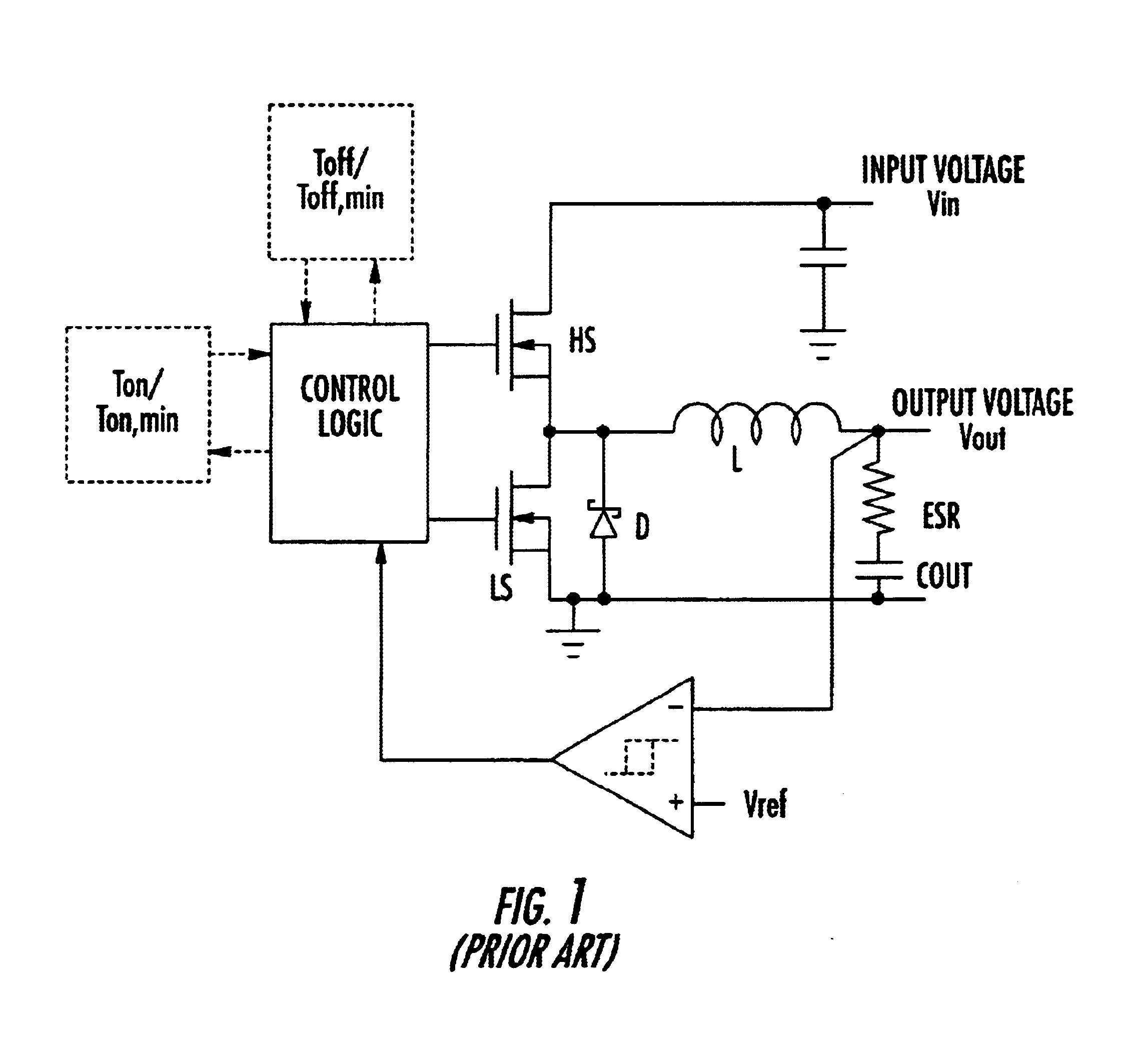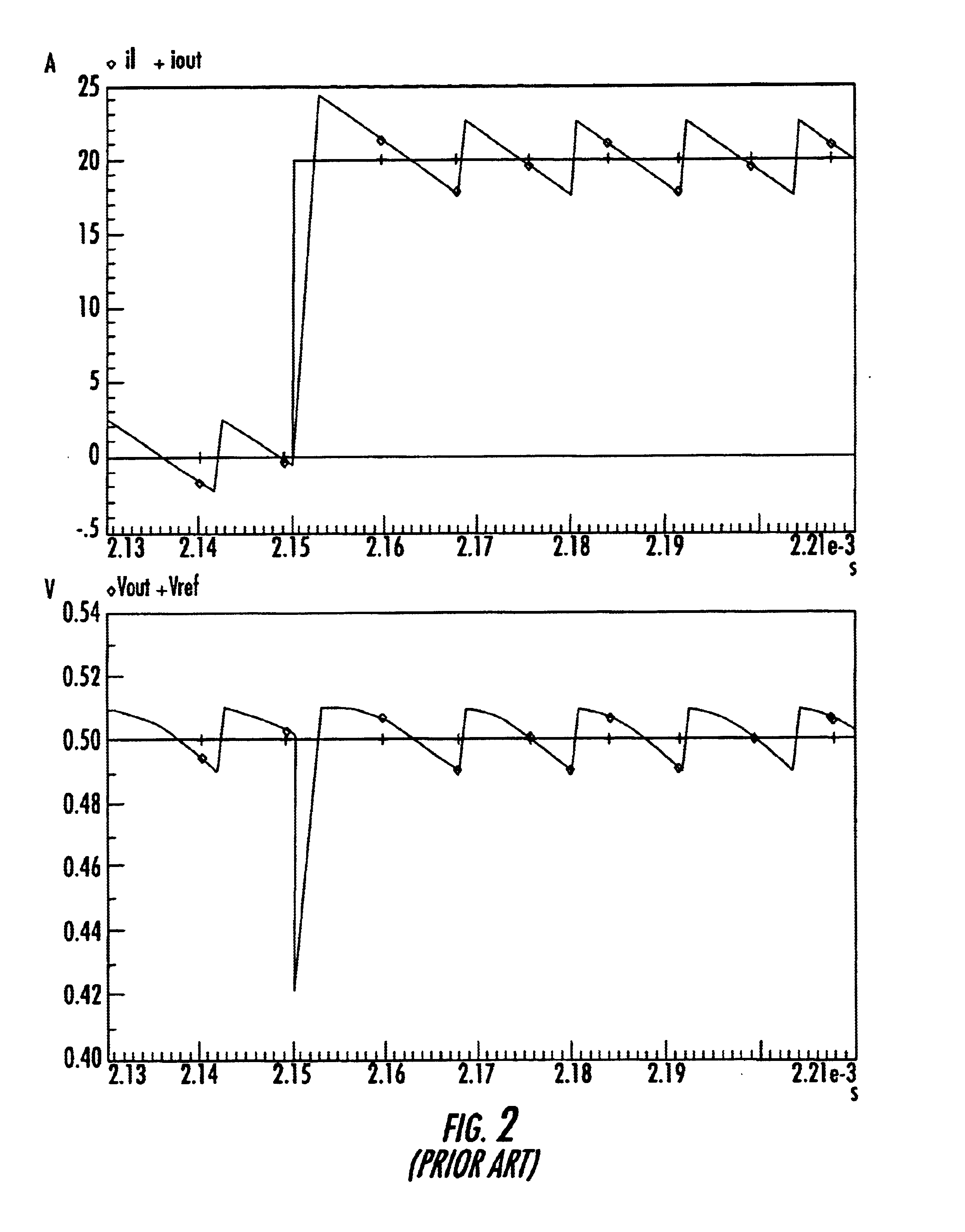Method of regulating the supply voltage of a load and related voltage regulator
a technology of supply voltage and voltage regulator, which is applied in the direction of electric variable regulation, instruments, and apparatus without intermediate ac conversion, etc., can solve the problem of limiting the speed of current variation, regulators are relatively slow at regulating output voltage to its reference value, and no longer true, so as to improve the accuracy of known controllers
- Summary
- Abstract
- Description
- Claims
- Application Information
AI Technical Summary
Benefits of technology
Problems solved by technology
Method used
Image
Examples
Embodiment Construction
[0065]Two embodiments of the regulator of this invention are depicted in FIGS. 7 and 8. For the purpose of illustrating how to realize a regulator according to the method of this invention, reference will be made to a step-down regulator. As will be evident to any skilled person, the illustrated circuits may be easily adapted to realize switching regulators of different topology, for instance regulators employing transformers as long as they employ an inductor driven in PWM mode to deliver current to an output capacitor and to a load eventually connected in parallel to the output capacitor.
[0066]A common feature of all the voltage regulator topologies is the presence of an inductance through which, at least during a phase of the cycle, stored energy is discharged towards an output buffer capacitor and thus towards the electric load. For example, in step-up regulators, the current ISW injected in the output capacitor through a switch is the current that flows through the inductor dur...
PUM
 Login to View More
Login to View More Abstract
Description
Claims
Application Information
 Login to View More
Login to View More - R&D
- Intellectual Property
- Life Sciences
- Materials
- Tech Scout
- Unparalleled Data Quality
- Higher Quality Content
- 60% Fewer Hallucinations
Browse by: Latest US Patents, China's latest patents, Technical Efficacy Thesaurus, Application Domain, Technology Topic, Popular Technical Reports.
© 2025 PatSnap. All rights reserved.Legal|Privacy policy|Modern Slavery Act Transparency Statement|Sitemap|About US| Contact US: help@patsnap.com



